Sustainability on the New Breckenridge Brewery Campus
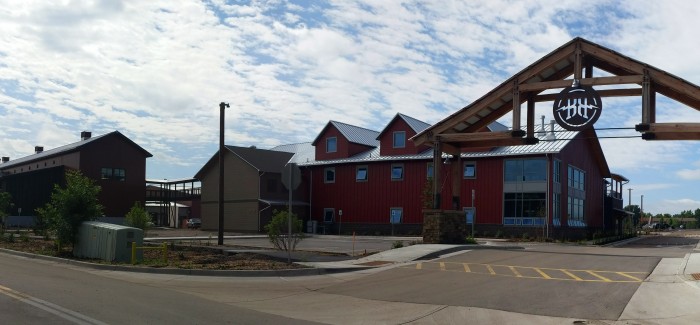
- Brian Phipps
- On July 17, 2015
Resources are finite. Protecting future materials is imperative. Sustainability is integral to successful business.
These are lessons I consistently hear from business leaders in all industries, including craft beer. The brewing industry is consistently innovative and creative with its sustainability initiatives to ensure water, energy, and raw materials are obtainable for the future.
In June, Breckenridge Brewery opened its new twelve-acre campus in Littleton, Colorado, after being headquartered on Kalamath St. in Denver for 20 years. The new facility allows the brewery to increase production for future growth.
I drive by the construction nearly once a week and, being a fan of beer, was excited for the new facility. With my work focusing on sustainability in business, I started to wonder how Breckenridge Brewery incorporated sustainability into its new facility. Did the ownership consult with other breweries for ideas? Is it doing anything unique? Is it open yet?!
After reaching out to Breckenridge Brewery with my queries, I scheduled an interview with Todd Usry,Brewmaster and Director of Brewery Operations. The plan was to tour the new facility, focusing on how it enables the brewery to be more efficient and environmentally-friendly.
The Tour
The morning of the tour finally arrived and I was stoked. Only a few clouds were in the sky and the Colorado sun shone, which was unusual for what had been an unseasonable last three months of mostly rain-filled days.
Farm House
I met Todd where our tour began: the Farm House. The Farm House is located on the west side of the campus and is the drinking, eating, lounging, and playing area. The building is expansive with two different dining areas as well as several complementary areas decorated with couches and a self-serve tap. Reclaimed window frames are used as ornaments in the high, open rafters. A church bench is placed at one table for seating. For the dining hall on the west side, Breckenridge used siding from a barn to fill a wall. Large windows allow the Farm House to be filled with natural light.
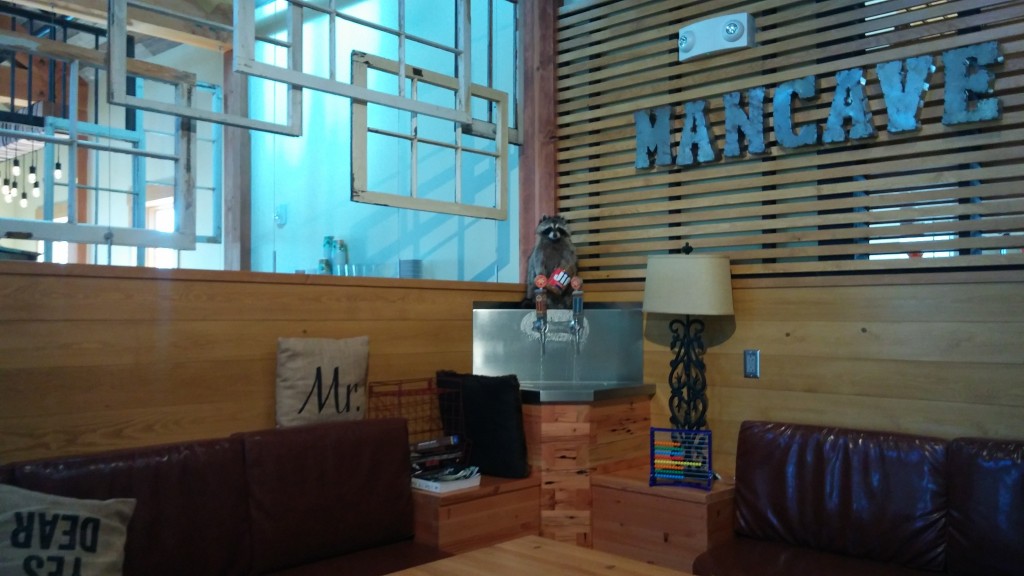
The Farm House design was inspired by Todd, and his wife Terry, dream of owning a farmhouse. The Usry’s moved to Colorado for the ski life, living in Steamboat for a couple of years. Todd invested in Breckenridge Brewery’s original move to Denver about 24 years ago and has invested in its current move. “We’re excited to offer a true destination experience with this brewery. Personally, I’m extremely excited about the efficiencies that modern equipment is providing throughout the plant,” Todd shared.
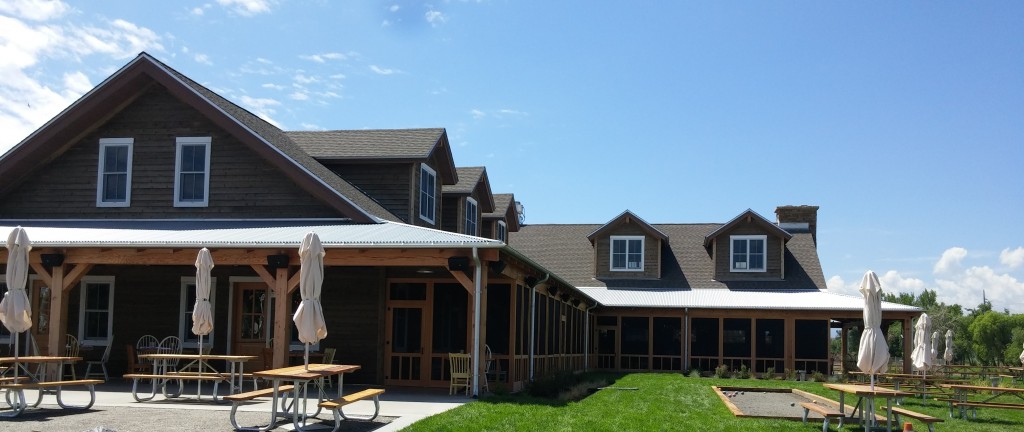
The brewery has been very busy since opening, Todd told me. The rain from the last few months slowed down some landscaping projects outside of the Farm House, but all appeared to be set up now with a bocce ball court, corn hole, and lots of outdoor seating overlooking an open field and the Rocky Mountains. They want to develop the outdoor area over the next year to create a space specifically for events and weddings.
The outdoor area of the Farm House also serves as a live music venue. To celebrate their 25th anniversary of operating, they will use the space for the Hootenanny on Saturday, July 18. Leftover Salmon will headline on a special stage on the loading docks to accommodate the very large crowd Todd expects.
Brewhouse

We left the Farm House and headed east across the street to the brewhouse. I asked Todd if they solicited advice from other breweries about designing a new facility and if that type of collaboration existed amongst the craft brewing community. “The collaboration in the industry is unbelievable!” he exclaimed. Todd named John Mallett from Bell’s Brewery (Galesburg, Michigan), Doug Odell from Odell Brewing Company (Fort Collins, Colorado) and Xcel Energy as contributors on how to design a brewery utilizing environmentally-friendly practices.
Immediately upon walking inside the brewhouse, I noticed the mission control center consisting of a few computers with several brand new tanks and equipment behind it. Todd explained what each piece of equipment did in the brewing process. Then, Todd expanded for me on what the upgrades did for the brewery in terms of efficiency and sustainability:
“One of the biggest savings is in raw materials – we use much less to produce the same results due to the efficiencies of the new brewhouse. Our utility usage has decreased with water and power efficiencies. We’re also able to bring more services in-house, using bulk packaging materials and pre-packing here as opposed to outsourcing this.”
One of the most unique pieces of equipment that the brewery installed is the vapor condenser made by Krones, a German packaging and bottling machine manufacturer. It is a rather plain-looking piece of stainless steel, but, as I learned, it is a defining piece of equipment for Breckenridge Brewery’s corporate citizenship and sustainability practices.
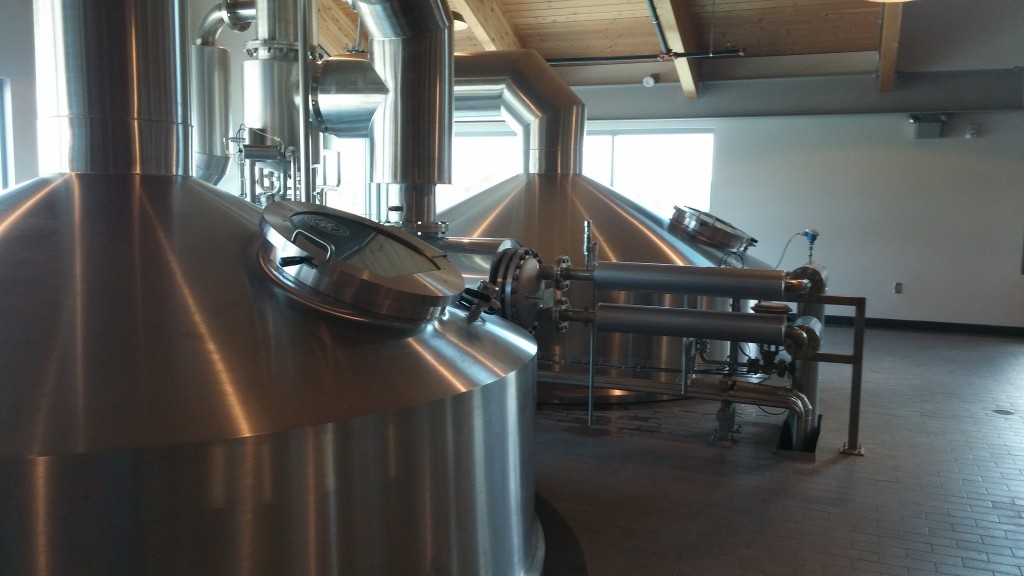
Todd shared that after looking for property around Denver and Jefferson County, he and his partners found this space in Littleton. The land was previously used by the Silver Sage Nursery. In 2007, Littleton residents voted against Walmart’s proposed superstore in fear of noise, light, and loitering issues. Prior to Breckenridge Brewery’s acquisition of the land, some residents expressed a concern about the smell the brewery would produce. To address that concern, the brewery looked into options and learned about the vapor condenser. Instead of steam being released during the brewing process, the vapor condenser captures and converts the steam into water and returns it. By implementing a vapor condenser, Breckenridge Brewery would save 1,500 gallons of water per brew as well as energy by not having to heat new water. These savings would essentially have the vapor condenser pay for itself in about a year. Knowing all this, Breckenridge Brewery was willing to purchase the equipment. Todd expressed that he does miss the aroma when going into work, but being a good neighbor is more important.
As we continued the tour and approached the bridge that connects the brewhouse to the storing and packing facility, Todd pointed out the LED lighting and windows. On the bridge, we were able to see the silo where all the spent grains are collected. As is common practice in the brewing industry, the spent grains are usually sent to a farm for cattle to eat and Breckenridge Brewery sends theirs to a farm in Fort Lupton, Colorado. Todd happily shared that a few times a year, the farm will send beef to Breckenridge Brewery to share with its staff.
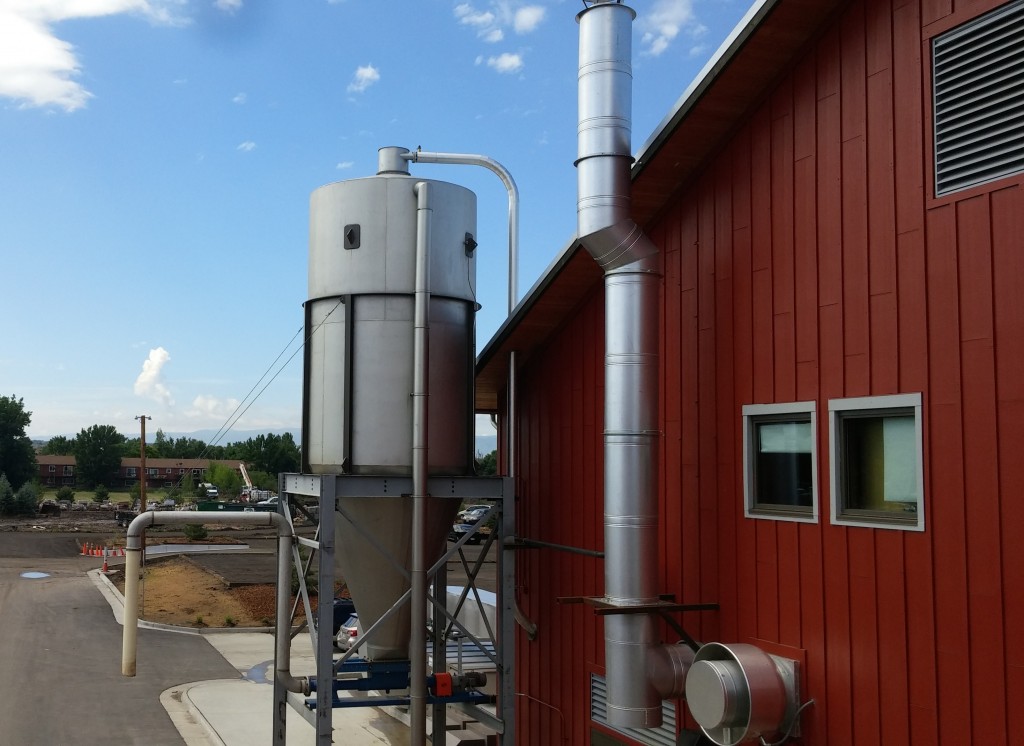
We moved inside to see 16 massive tanks, where fermentation takes about, which holds about 2 million beers. In this giant space, Todd pointed out a new piece of equipment that pretreats processed water which allows the brewery to reuse the water for irrigation around the campus.
We kept walking to see the new bottling and canning lines, although at this time they are still undergoing installation. The Kalamath location is still bottling right now, but Todd hopes they can start running these machines here in the next few weeks. With the new facility, they will be able to increase canning from 35 per minute to 275 per minute as well as have the capability to fill 12 oz bottles to 100 per minute and 22 oz bottles to 50 per minute.
One of the final, and really innovative, sustainable designs Todd was looking forward to installing is a natural air cooling for the refrigerator containing finished product. When the outside temperature decreases to 47 degrees Fahrenheit or below, the cool natural air will flow into the area, chill the product, and shut down the refrigerators will shut down. When the temperature rises, the refrigerator cooling system turns back on and prevent hot air from entering.
Giving Back
As the tour was wrapping up, I asked Todd more about the surrounding areas of the campus. Further west of the Farm House is the Mary Carter Greenway Trail, part of the trail system along Highway 85/Santa Fe Drive that goes into Denver. Todd said they’ve already had many people visit the brewery using the trail. Todd then excitedly told me about their newest initiative to be a good neighbor. They will use a portion of the tour fee (tours are $3 and you get 26 ounces of beer to try) to donate to charity. For the first six months, the charity will be South Suburban Parks Foundation which helps maintain the parks and trails system in Arapahoe County. In addition, there will be a cleanup in the area for the trails that Todd will promote to the Breckenridge staff. Todd hopes that through the new facility and tour donation program, they will be able to provide more support to the community.
With our tour finished, I asked what advice they would have for smaller breweries to incorporate sustainability practices. Todd shared: “Work with local cities and utilities during your planning and design phases to incorporate sustainability practices early on. If already established, you should still meet with them regularly to get advice on making positive changes.”
As I drove home, I realized how often sustainability reinforces the brewery’s needs. For Breckenridge Brewery, they want to be a good corporate citizen and invite their friends to come hang out and play. Its sustainability initiatives incorporate the community’s values and best practices from the brewing industry. Sounds like a good neighbor to me.
Related Posts
Craft Breweries Continue Commitment to Sustainability, Solar Energy... February 22, 2021 | Taylor Laabs
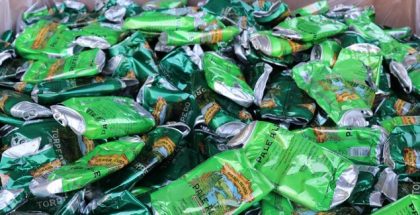
MadTree Brewing’s Purpose is Rooted in Sustainability... April 16, 2021 | Kindsey Bernhard

Craft Beer, The Planet & What You Can Do On This Earth Day... April 22, 2016 | Brian Phipps

New Belgium Brewing Interview | The Carbon Neutral Toolkit... September 7, 2021 | Brian Phipps



Submit a Comment